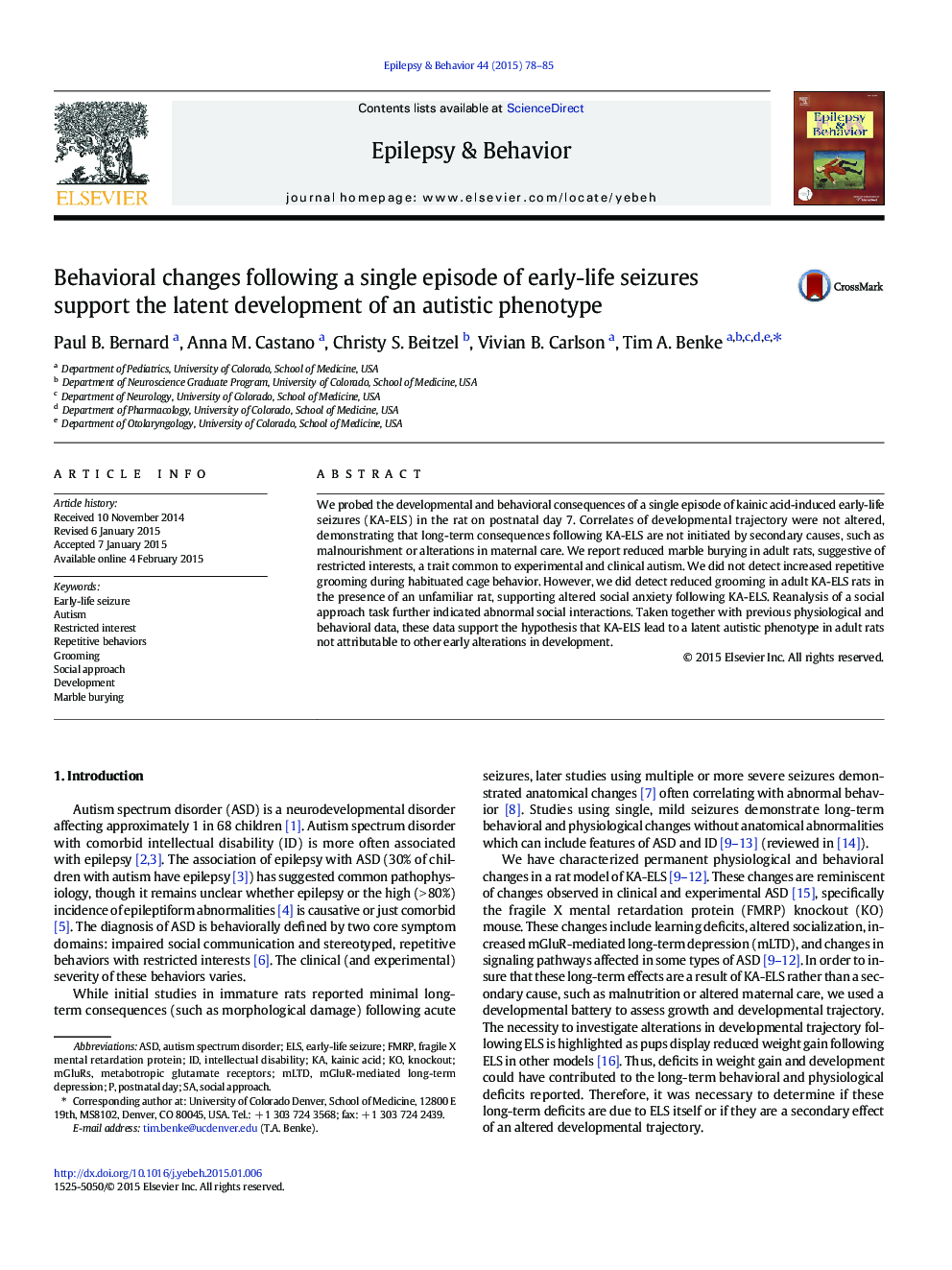| کد مقاله | کد نشریه | سال انتشار | مقاله انگلیسی | نسخه تمام متن |
|---|---|---|---|---|
| 6011474 | 1579845 | 2015 | 8 صفحه PDF | دانلود رایگان |
- Early and late effects of kainate-induced early-life seizures (KA-ELS) were studied in rats.
- KA-ELS do not disrupt dam-pup interactions or early development.
- KA-ELS disrupt social interactions in adult rats.
- KA-ELS cause abnormal repetitive behaviors in adult rats.
We probed the developmental and behavioral consequences of a single episode of kainic acid-induced early-life seizures (KA-ELS) in the rat on postnatal day 7. Correlates of developmental trajectory were not altered, demonstrating that long-term consequences following KA-ELS are not initiated by secondary causes, such as malnourishment or alterations in maternal care. We report reduced marble burying in adult rats, suggestive of restricted interests, a trait common to experimental and clinical autism. We did not detect increased repetitive grooming during habituated cage behavior. However, we did detect reduced grooming in adult KA-ELS rats in the presence of an unfamiliar rat, supporting altered social anxiety following KA-ELS. Reanalysis of a social approach task further indicated abnormal social interactions. Taken together with previous physiological and behavioral data, these data support the hypothesis that KA-ELS lead to a latent autistic phenotype in adult rats not attributable to other early alterations in development.
Journal: Epilepsy & Behavior - Volume 44, March 2015, Pages 78-85
